
Head On is created by Cai Guo-Qiang 蔡國強 for his solo exhibition of the same name at the Deutsche Guggenheim in Berlin. Although the Berlin Wall is long gone, and the former East Germany and West Germany have reunified, there remain deep and intractable historical issues between the two sides.
The 99 life-sized wolves are leaping en masse towards an unseen wall, with those at the front falling from striking the wall while those bringing up the rear continuing surging forward, undeterred. Seen from afar, the leaping wolf pack forms an arc full of force and power, their fierce courage and spirit of warrior camaraderie seemingly serving as a reminder to people: humanity is easily blinded by a kind of collective mentality and action, and is destined to repeat such error to an almost unbelievable degree.
The crux of this installation lies just before the glass wall, as the artist reminds people: invisible walls are the hardest to dismantle.
(Source: National Museum of Singapore)
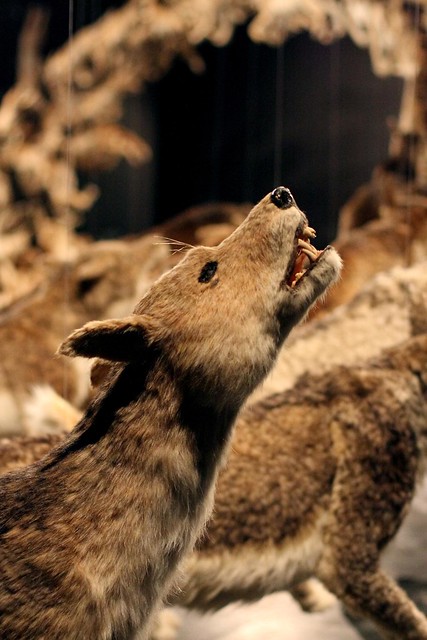
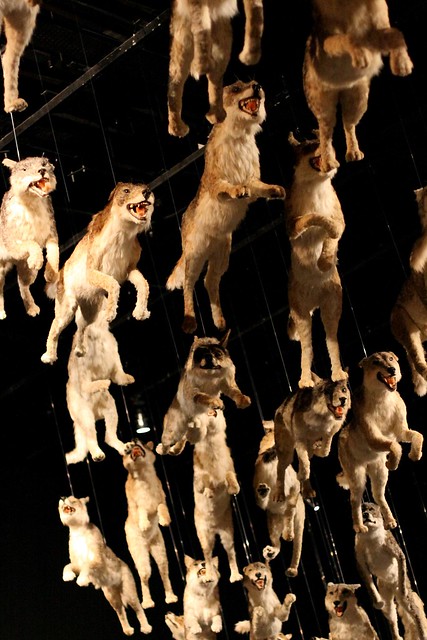

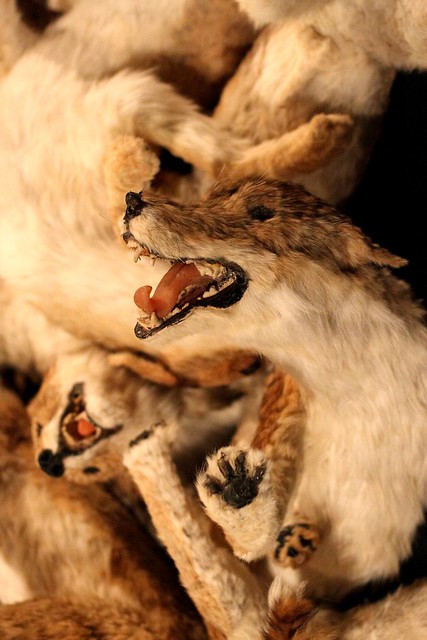
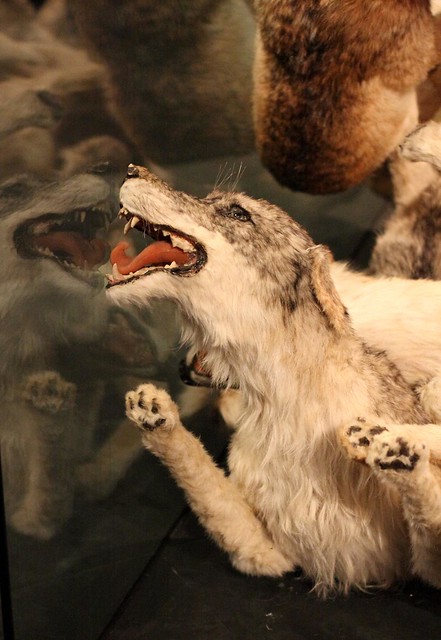
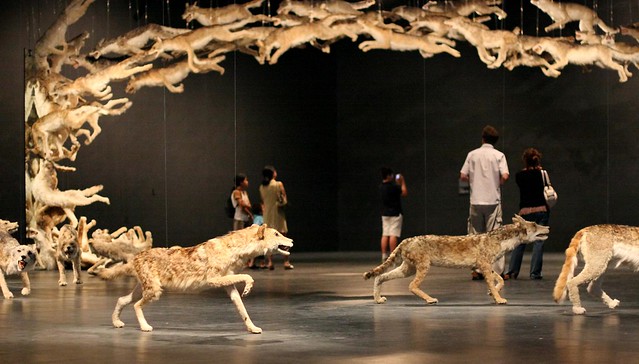
The whole exhibition consists of three parts: the eponymous installation Head On, where replicas of 99 life-sized wolves run fearlessly and collide one after another into a glass wall; Illusion II, a two-channel video installation that also documents the explosion project by the same title; and Vortex, a gunpowder drawing depicting hundreds of wolves chasing one another in a circular motion.
The installation of the heroic wolves first premiered at the Deutsche Guggenheim Berlin in 2006 and has since been exhibited in many institutions around the world, including the Solomon R. Guggenheim Museum in New York and Bilbao, the National Art Museum of China in Beijing, and the Taipei Fine Arts Museum before traveling to Singapore.
What makes the installation at the National Museum of Singapore unique compared with the work's previous presentations is that it is shown in a gallery completely painted in black. Not only does this dramatically complement the wolves' silvery mane but it also invokes a new way of seeing the piece. (Source: National Museum of Singapore)
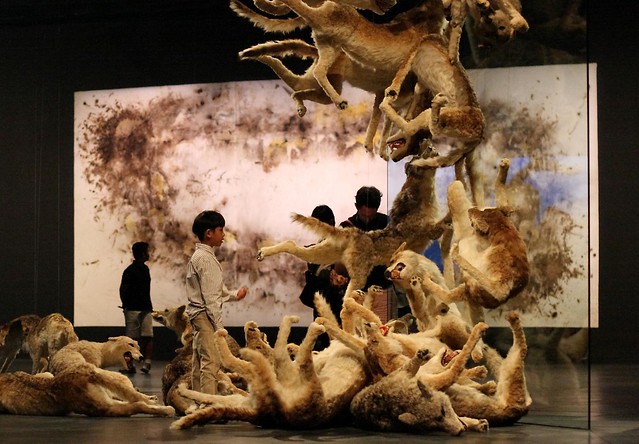
I like the exhibition. Nothing compares to seeing it personally. Invisible walls are everywhere in our society... corporate, politics, religion... you name it. And herd mentality is so prevalent... especially when humans, citizens, electorates, investors can't be bothered to think for themselves and submit to convenient propaganda.
About the Artist
Cai Guo-Qiang 蔡國強 was born in 1957 in Quanzhou City, Fujian Province, China. Cai was awarded the Golden Lion at the 48th Venice Biennale in 1999, the Seventh Hiroshima Art Prize in 2007, and the 20th Fukuoka Asian Culture Prize in 2009. He was also Director of Visual and Special Effects for the opening and closing ceremonies of the 2008 Summer Olympics in Beijing. In 2008, he was the subject of a retrospective at the Solomon R. Guggenheim Museum, New York. He has lived in New York since 1995. (Source: www.caiguoqiang.com)
Shooting Notes:
Camera Body: Canon 40D
Lens: EF 50mm f/1.4 USM with Hood
Mode: Av @ 2
ISO: 3200
Focusing: Auto
The gallery was black, littered with spot lights and "NO FLASH" signs. Just as well because I didn't have any flash unit with me (I don't like using the build-in pop up flash on my camera).
I'm very glad I had my fast 50mm prime with me as I can use a much wider aperture in this dark condition, yet was also restricted by the limited field of view as the installation spanned across the whole gallery. I had to go right to the corner of the gallery to get my picture and glad it didn't disappoint :)
Noise was a problem as I had to bump up the ISO to 3200 to get a decent shutter speed (i.e. 1/30) without camera shake. Noise reduction during post processing helped to alleviate much of the noise problem.
No comments:
Post a Comment